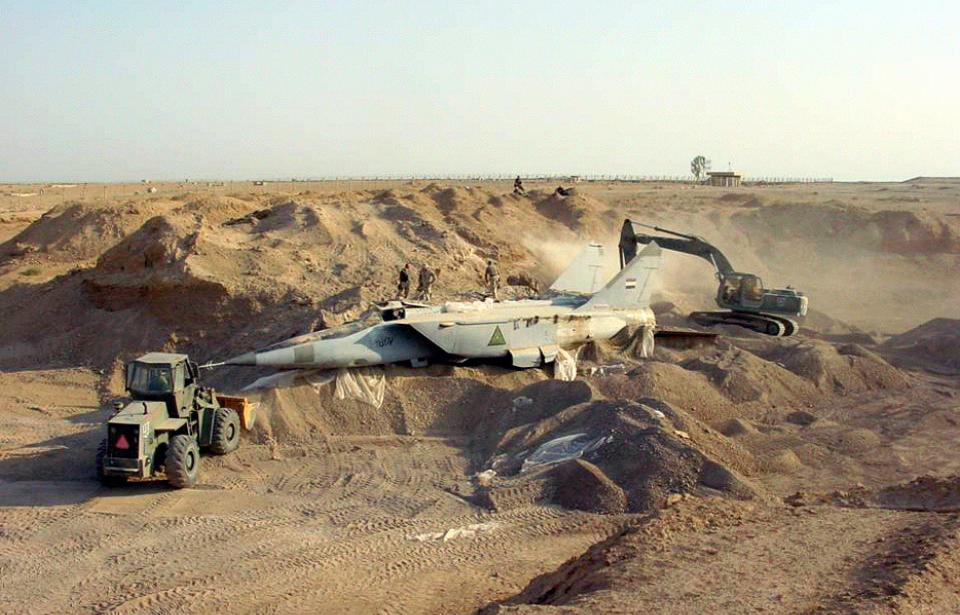Discovering a Mikoyan-Gurevich MiG-25, famously dubbed the Foxbat by NATO during the Cold War, nestled in the heart of the desert would indeed be quite a surprise. This Soviet-era interceptor, celebrated for its remarkable speed and high-altitude performance, was used by several nations worldwide, including Syria, India, Algeria, and Iraq.
Among its variants, the MiG-25RB, or Foxbat-B, stood out as a single-seat aircraft outfitted with sophisticated reconnaissance equipment and capable of carrying up to eight 500-kg bombs.
The aircraft were discovered in 2003
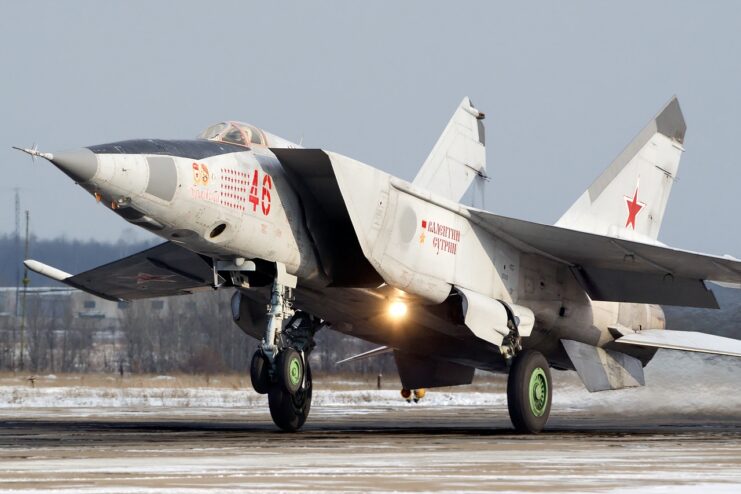
In the first image above, American soldiers are seen retrieving the interceptor from the sand. This find took place in the early days of the Iraq War. In April 2003, troops unearthed the aircraft, which was deeply buried at Al Taqaddum Air Base in Iraq’s western desert.
American troops were operating in the area for weeks before discovering them
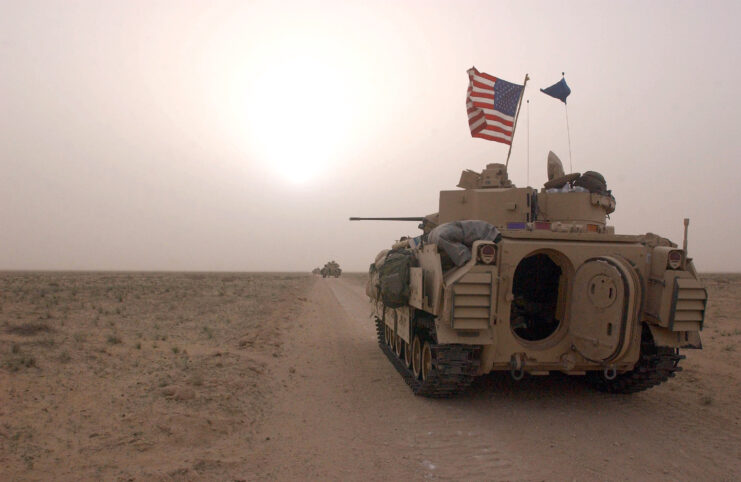
Its presence at the base came as a surprise to many, despite there being intelligence that certain things had been buried in the region. As former Defense Secretary Donald Rumsfeld put it, “We’d heard a great many things had been buried, but we had not known where they were, and we’d been operating in that immediate vicinity for weeks and weeks and weeks…12, 13 weeks, and didn’t know they were [there].”
The wings weren’t found
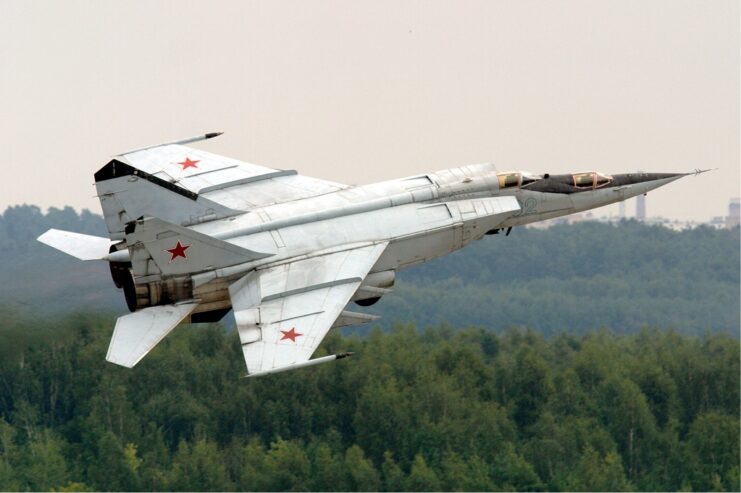
Though the aircraft’s body remained in surprisingly good condition, its wings had been removed before it was buried under sand, and they were not found nearby. It is believed that the MiG-25RB was hidden in the desert to prevent its destruction by coalition forces during the invasion. As of 2006, this aircraft is now located at the National Museum of the US Air Force at Wright-Patterson Air Force Base, Ohio.
Several other aircraft of the same model were also found. In 2003, dozens were uncovered, including more MiGs and Sukhoi Su-25s.
Why were they buried?
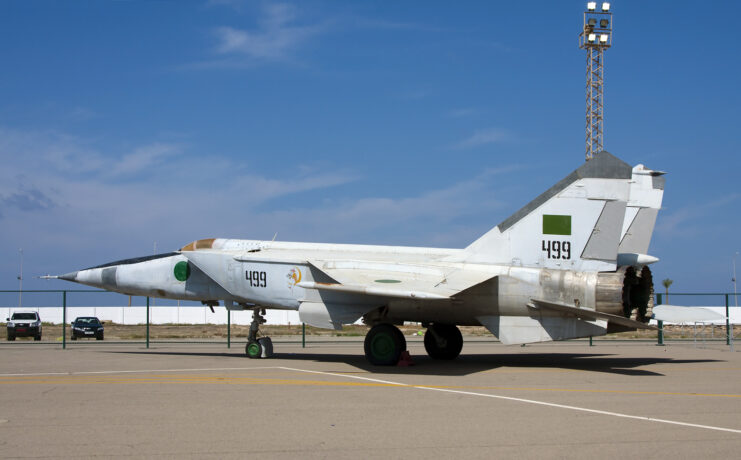
Why were these aircraft buried underground rather than put to use? It’s intriguing to know that, prior to the American invasion, Iraq had one of the largest Air Forces in the region. The nation had heavily invested in enhancing its aerial abilities, which included acquiring advanced jets, improving airbases and runways, and constructing new hangars.
They wouldn’t do much against the American invasion

Want War History Online‘s content sent directly to your inbox? Sign up for our newsletter here!
However, when the US invaded and marched on Baghdad in 2003, they encountered no aerial resistance, as the Iraqi forces had decided this would do nothing to stop the much superior Americans. Instead, it was ordered that the fleet be buried in the desert, which is why the US military found so many aircraft under the sand.
